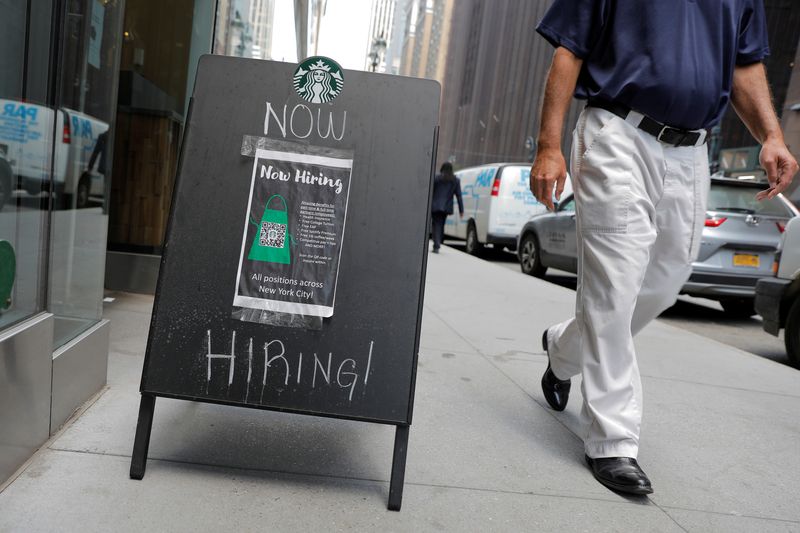
©Reuters
Investing.com – The U.S. economy added many more jobs than expected in January, pointing to persistent labor market strength that could strengthen the case for the Federal Reserve to delay cutting interest rates.
in the world’s largest economy rose by 353,000 last month, compared with an upwardly revised total of 333,000 in December, according to data from the Bureau of Labor Statistics. Economists had predicted a value of 187,000.
The December revision — a sharp increase from the previous level of 216,000 — was the result of an annual benchmarking process and seasonal adjustment factors, the BLS said in a statement.
Increased employment in sectors such as professional and business services, healthcare and retail helped offset declines in employment in mining, quarrying and oil and gas extraction.
January was 3.7%, in line with the previous month. Meanwhile, it grew 0.6% on a monthly basis, accelerating from 0.4% in December and faster than projections of 0.3%.
Fed officials are looking for signs of moderation in labor demand, which in theory could help deflate wage expansion and the resulting upward pressure on inflation. For this reason, January’s shocking data could influence how the central bank approaches possible interest rate cuts in the coming months.
Earlier this week, Fed Chair Jerome Powell downplayed expectations for an early spring reduction, saying such a scenario was not his “base case.” He added that more evidence of price increases cooling is needed before the Fed can begin contemplating cuts.
The comments came after the Fed held rates at a range of 5.25% to 5.50%, a more than two-decade high, but removed text from its official statement regarding the possibility of further increases if necessary.
Markets have since recalibrated their bets on cuts this year, with CME Group’s Fed Watch Tool now showing a roughly 60% chance that the Fed will cut rates for the first time by 25 basis points in May. Previously, hopes, fueled by the Fed’s surprisingly dovish comments late last year, were high that a reduction could happen as early as March.
After Friday’s data, stock futures were mixed and an index tracking the U.S. dollar against a basket of other currencies rose. Both the rate-sensitive 2-year U.S. Treasury yield and the benchmark 10-year yield, which typically move inversely to prices, also rose.